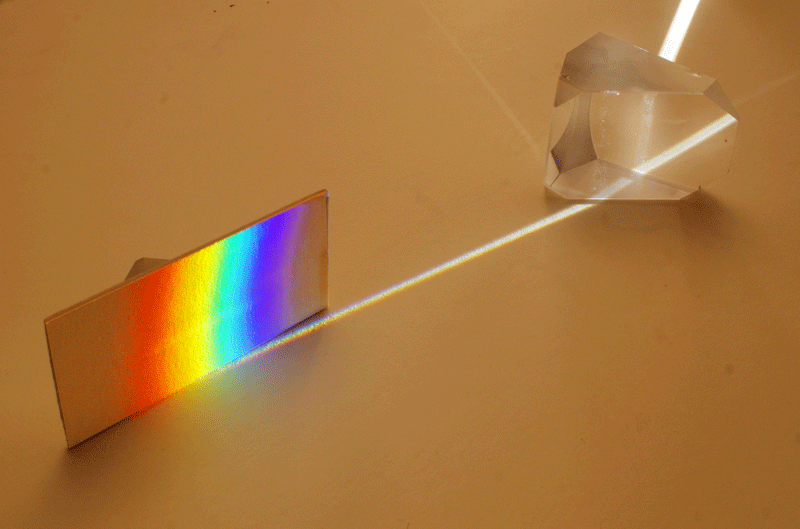Refraction is the bending of light through a substance.Different substances bend light at different angles.White light is made up of a full spectrum of colors.
Each color has a different wavelength, and bends at a different angle.
This is the same effect that produces rainbows in the atmosphere.
The most common illustration of this is a glass prism as seen here.
The colors of the spectrum can be remembered easily with the acronym ROYGBV (pronounced: roy-gee-biv)
Prisms bend light by refraction. This animated diagram shows monochromatic (single colour) light beams passing through a triangular prism whose shape varies with time.
As the prism widens at its base so the rays are bent (refracted) more.
Prisms have many uses in optical devices.
In reality, when beams of white light pass through a prism the light resolves into different colours and creates a spectrum of colours.
The higher energy (shorter wavelength) or blue light is refracted more than the lower energy (longer wavelength) or red light.
The various wavelengths that make up white light (e.g. sunlight) all get refracted by a different amount and so the light is dispersed into its constituent colours.
This produces the familiar rainbow of colours or spectrum.



No comments:
Post a Comment